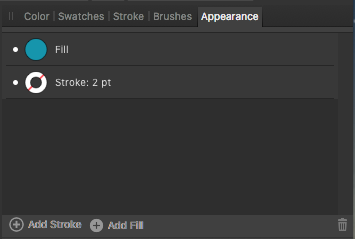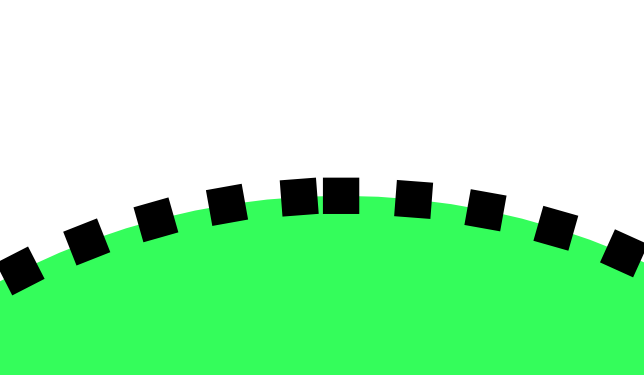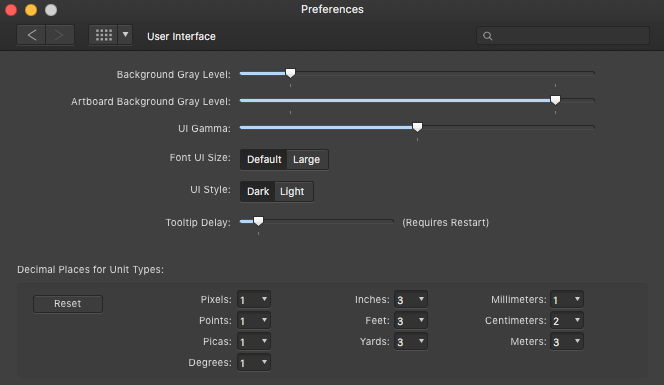
Mark Oehlschlager
Members-
Posts
644 -
Joined
-
Last visited
Everything posted by Mark Oehlschlager
-
Snapshot Function is Broken (Photo 1.8.3)
Mark Oehlschlager replied to Mark Oehlschlager's topic in V1 Bugs found on macOS
Hi, @MEB Yes, I can recreate it from scratch. Here's my setup: iMac (27-inch, Late 2012) 2.9 GHz Intel Core i5 Mac OS 10.13.6 (High Sierra) Affinity Photo 1.8.3 -
Snapshot Function is Broken (Photo 1.8.3)
Mark Oehlschlager replied to Mark Oehlschlager's topic in V1 Bugs found on macOS
I sometimes wonder whether all the broken features (e.g., this Snapshot function, the Zoom tool and contextual bar Zoom controls, etc.) are an unavoidable by-product of trying to develop an integrated suite of applications, further complicated by attempting to make them run on three very different OS's (Mac OS, Windows, iOS). How is it that the code for long established features, basic features even, get broken with every point upgrade? Not being an app developer myself, I can't imagine. Frustrating for everyone involved. I'm sure the Serif staff would rather focus on getting to parity with, or surpassing, the Adobe products rather than getting hung up on fixing all these broken features and then testing on three different platforms. -
Snapshot Function is Broken (Photo 1.8.3)
Mark Oehlschlager posted a topic in V1 Bugs found on macOS
I just discovered that the Snapshot functionality is broken in Photo 1.8.3. One can take progressive snapshots of one's work using the Snapshot Panel, but one cannot restore to previous states using the Restore button in the Snapshots Panel. Interestingly, if one invokes the Edit in Designer command, one can use the Snapshot Panel in Designer to restore an earlier snapshot. Please fix. Thank you. -
Just installed the 1.8.3 releases of the Affinity Suite. Currently using Designer to produce some simple architectural plans, and discovered a bug with the Styles panel: I'm unable to add more than one line style (solid, dashed, dotted, centerline, etc.) to the Style panel in succession. After some experimentation with all three of the Affinity Suite applications, I discovered that one is only allowed to add successive line styles to the Styles panel IF the line styles also have fills applied. Please address this bug in the next beta release, so that fills are not required in order to save line styles to the Styles panel.
-
@Sean P Just downloaded the 1.8.3 RC Betas for Designer and Photo. I discovered that the zoom problems outlined above remain a problem. In my opinion, this basic level of functionality should be addressed sooner rather than later. Maybe it's more difficult to fix than I can understand, but I imagine little bugs like these zoom behaviors and feedback would undermine new customers' confidence in the Affinity line of apps. Adding new features like Autotrace or Live Warp filters may be a big ask appropriate for a 2.0 release, but restoring the functionality of the zoom behaviors and feedback should be a priority even for these point releases to 1.8.x Thanks, Mark
-
I've noticed that the Add Stroke and Add Fill command labels at the bottom of the Appearance panel appear blurry whenever a text or group element is selected, and the commands are inoperable. However, for regular shape or curve elements, the Add Stroke and Add Fill command labels at the bottom of the Appearance panel are crisp and legible, and the commands are operable. (See screenshots below.) Not sure why this is. Perhaps the UI designers are trying to overlay a 'grey' version of the command labels over a 'white' version when the commands are meant to be inoperable? If so, then the apparent blurriness may be due to misaligned 'grey' and 'white' versions of the command labels. Please fix. Thanks.
-
Is there a way in the Affinity apps to achieve an even distribution of dash patterns along a dashed line? For a line or open curve, the desire is that a dash should terminate the endpoints of the curve and that the dash pattern be spaced evenly between. For a closed curve, the desire is that a dash pattern be spaced evenly such that there is no point along the curve where the pattern is broken. (See problem in screenshots below.)
-
Have just installed the Beta updates for Designer (1.8.2.0) and Photo (1.8.2.172). All of the Zoom controls appear to remain broken. Double-clicking the Zoom Tool *does* set the document zoom to 100%, however neither the Zoom pop-up menu nor the Zoom slider in the contextual toolbar report the change. If one then selects the Move Tool and then the Zoom Tool, the Zoom pop-up menu will refresh and reflect the actual zoom level. On the other hand, the Zoom slider in the contextual toolbar never updates to report the actual zoom level. Double-clicking the View Tool *does not* set the document zoom to “Fit”. Instead it sets the document zoom to 100%. The Zoom pop-up menu and the Zoom slider in the contextual toolbar are neither synchronized with each other, nor with the Zoom Tool or the View Tool.
-
nested styles
Mark Oehlschlager replied to Passorolle's topic in Feedback for Affinity Publisher V1 on Desktop
@wgwild Unfortunately, Publisher only allows for two levels of nested styles: the base paragraph style; and a single nested character style indicated in the "Initial Words" panel of the paragraph style window. We should continue to lobby for multiple nested styles here on the Affinity Forum. -
@Adam Simon Some things are definitely handled differently in Affinity, and leading is one of them. In Affinity, standard leading (line spacing) is actually set in the Paragraph panel, NOT in the Character panel. What looks like a leading attribute field in the Character panel is actually a "Leading Override" attribute field. Presumably it made some sense to the developers that someone would want to override the leading values set in the Paragraph panel, and so redefined the leading field in the Character panel to function as a leading override. I have no idea why they designed the software this way. It makes no sense to me.
-
Have just installed the 1.8.1 updates for the entire Affinity Suite. All of the Zoom controls appear to be broken. Double-clicking the Zoom Tool does not set the document zoom to 100% Double-clicking the View Tool does not set the document to zoom to fit. Selecting a zoom percentage from the contextual toolbar's Zoom pop-up menu does zoom the document, but the change is not accurately reflected in the Zoom slider. Selecting a zoom percentage from the contextual toolbar's Zoom slider does zoom the document, but the change is not accurately reflected in the Zoom pop-up.
-
UPDATE: Although I gained access to the install button by going to the "Purchased" tab of the MAS, and was able to download and install the 1.8.1 updates, the MAS interface continues to prompt me to install both Publisher and Designer (though not Photo). Very strange. I don't know whether this has to do with the way that Apple is handling the Affinity apps in the store, or that it has something to do with a broken behavior of the MAS for Macs still running High Sierra (OS 10.13.6) like mine.
-
@MEB I am signed in with the same Apple ID. For what it's worth, this is my situation: 2012 iMac running Mac OS High Sierra (10.13.6) Installed released versions of Affinity Suite 1.7.3 Installed Beta Affinity Suite 1.8.0 How many days would you recommend to wait for the updates to appear in the Mac App Store?
-
An old problem with units in the Guides Manager being rounded to a single decimal place persists even in the latest Affinity Beta apps. (See screenshots below.) For example, in User Interface Preferences, I've indicated three decimal places for "Inches", but when I go into Guides Manager and attempt to set a margin at 0.25", the displayed value is rounded to 0.3". And when I attempt to set a margin at 0.625", the displayed value is rounded to 0.6". The rounding errors also occur in the Column Guide Gutter field, as well as the Spread Origin fields, though not in the Horizontal or Vertical Guide fields. Please investigate and fix. Thank you.
-
Very glad to see the Affinity Apps import Adobe "Smart Objects" as equivalent "Embedded Document" layers. I have a few questions: In Adobe Photoshop, the primary usefulness of "Smart Object" layers is the ability to apply non-destructive distortions and transforms to the layer artwork. Do you plan for "Embedded Document" layers to share the same functional property? In Adobe Photoshop, one can right click on a layer and convert it into a "Smart Object" layer to be used in non-destructive distortions and transforms. Do you plan to add that functionality to Photo? Can one right click on a layer in Photo and convert it into an "Embedded Document / Smart Object" layer? Is there a plan to allow both the Perspective and Mesh Warp tools to be applied non-destructively to "Embedded Document / Smart Object" layers? This is relevant to those of us who build mockups of packaging and 3D objects, where the need is to convincingly shape and apply logos and other artwork to boxes and bottles, and still have the ability to replace the artwork in the "Embedded Document / Smart Object" layer. Is there any chance that Affinity "Embedded Document" layers can be exported out to PSD files as "Smart Object" layers rather than flattened raster layers?
-
Very happy to see the Photo Beta add the ability to preserve PSD Smart Objects. Just to clarify what current capabilities are: • Affinity Photo will preserve PSD Smart Objects by treating Smart Object layers as Embedded Documents? • The Embedded Document layers can be operated on non-destructively? • When exported back to PSD file format, the Embedded Document (Smart Object) layers will be flattened into regular PSD layers?









